The most populous city of Hungary is one of the many capital cities that was established on the banks of the Danube River.
Budapest is the second-biggest city on the second-longest river in Europe after Vienna.
It has a history that goes back to Roman times. The Romans conquered the region fairly easily and transformed the existing Celtic settlement into the city of Aquincum.
It was the capital city of the Roman province of Pannonia Inferior and became an important trading center in the region. Today, nothing more than some ruins remain of the ancient Roman city.
The Hungarians only arrived in his region in the 9th century and the city of Buda was invaded multiple times. The Mongols invaded in the 13th century and the Ottomans in the 16th century.
The Ottoman occupation later 150 years as the reconquest of Buda only happened in 1686. This was followed by a time of great prosperity and architectural advancements.
The most important moment in the history of the city happened in 1873 when the three adjoining cities Buda, Óbuda, and Pest were joined together to form the modern-day city of Budapest.
Many famous landmarks in Budapest were constructed when the city was the co-capital of the Austro-Hungarian Empire.
In this article, you’ll discover some of the most famous buildings in Budapest.
1. Buda Castle
Buda Castle is both an incredible building in Budapest and one of the most important historic structures in the city. the original medieval castle was completed in 1265 but by the beginning of the 18th century, nothing more but ruins were left because of an extended siege.
The immense Baroque building that replaced it was completed between 1749 and 1769 and is a great example of the prosperity that the city experienced during this era. Today, the building houses both the Hungarian National Gallery and the Hungarian National Museum.
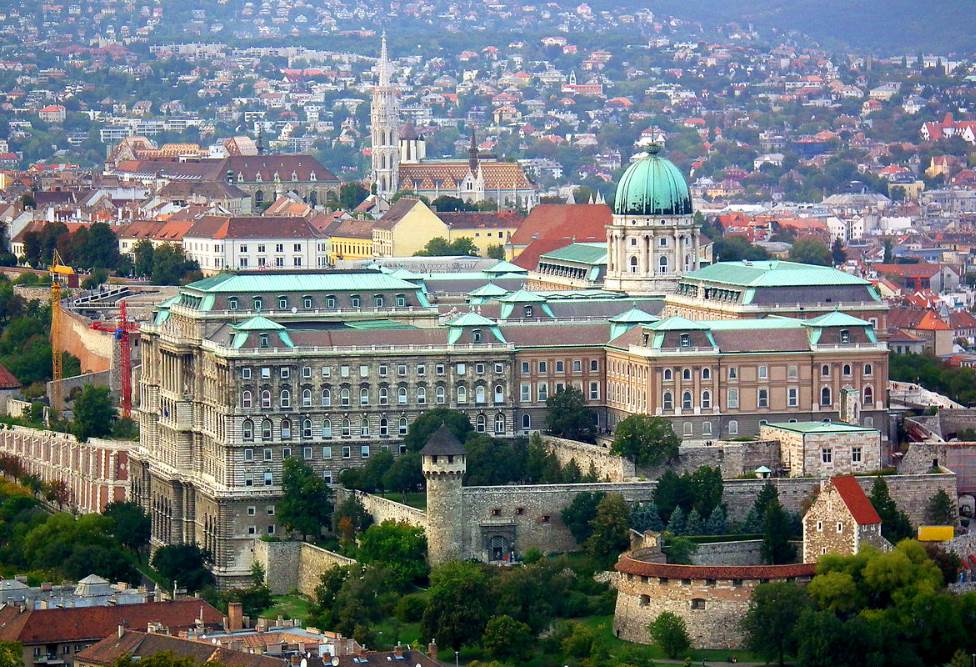
2. Hungarian Parliament Building
The Hungarian Parliament Building is an equally impressive building that is located on the Pest side of the city on the eastern bank of the Danube River. It’s the home of the National Assembly of Hungary and has been since the building was completed between 1885 and 1904.
It’s one of the most stunning Gothic Revival buildings in the world and also incorporates both Renaissance and Baroque architectural elements. This structure has a length of 268 meters (879 feet), a width of 123 meters (404 feet), and a height of 96 meters (315 feet). These dimensions make it the largest building in all of Hungary.

3. Hungarian State Opera
The Hungarian State Opera House is an amazing opera house that dates back to the era when Budapest was the co-capital of the Austro-Hungarian Empire. It was commissioned by Emperor Franz Joseph I and completed between 1875 and 1884 in the Renaissance Revival architecture style.
It’s far from being the largest opera venue in the world because the main auditorium only features 1,300 seats. This is compensated by the lavish Baroque decorations of the interior and the pristine acoustics that rival any other major opera venue in the world.
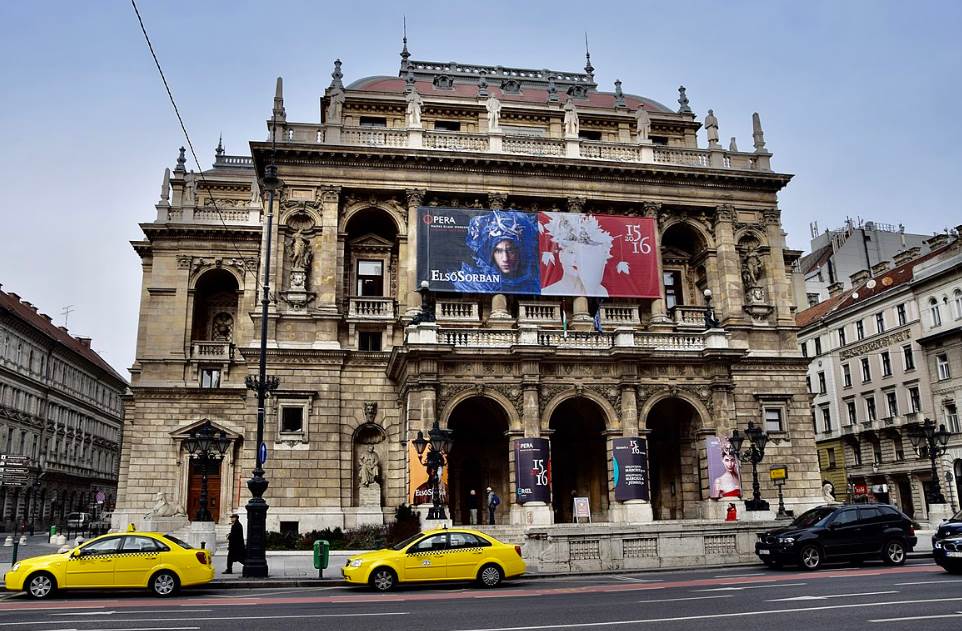
4. Matthias Church
The Matthias Church is officially known as the “Church of the Assumption of the Buda Castle.” Unlike its name suggests, it’s not located near Buda Castle and can be found a few hundred meters to the north in Holy Trinity Square on Castle Hill.
The original Romanesque building on this location was completed in 1015 but nothing of this church remains today. The current Gothic church was completed in the second half of the 14th century and was completely renovated in the 19th century. Both Franz Joseph I of Hungary and Charles IV of Hungary were crowned inside this church.
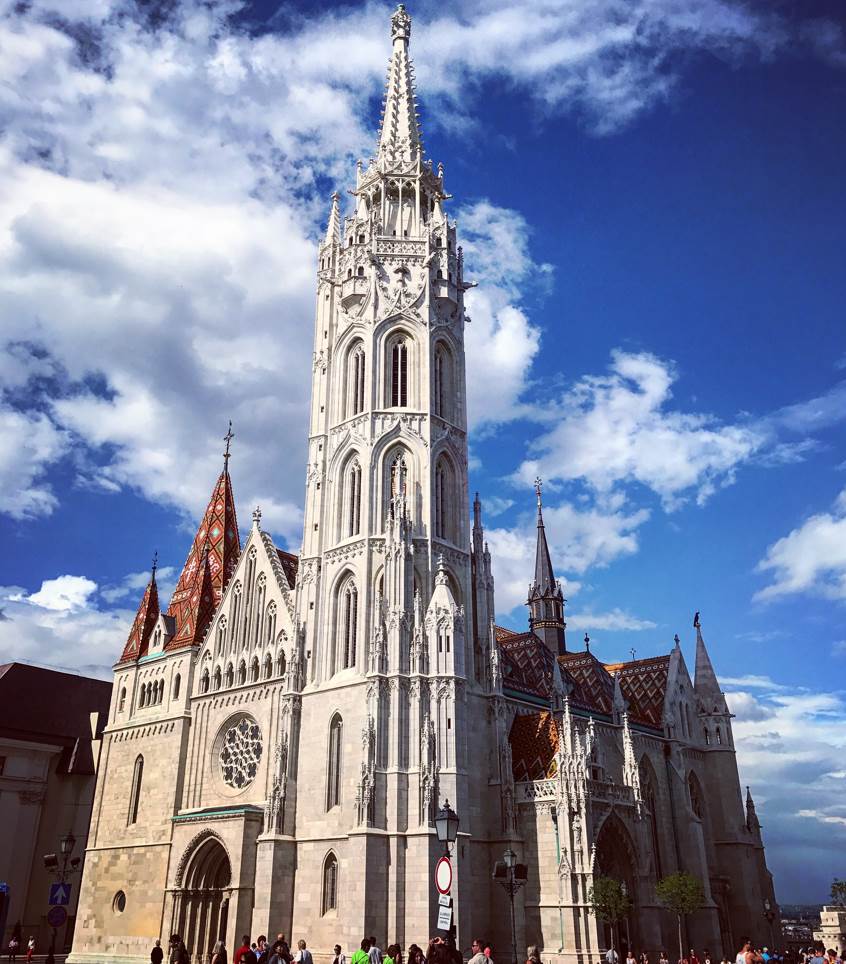
5. Heroes’ Square
Heroes’ Square is one of the most famous squares in Budapest. The square is dominated by several monuments that depict important Hungarian leaders, including the Seven chieftains of the Magyars and various other national leaders who played a major role in Hungary’s history.
The square faces several important buildings and landmarks, including the Museum of Fine Arts and the Palace of Art. One of the most important urban parks in the city center of Budapest called “City park” is located just to the east of this amazing public space.
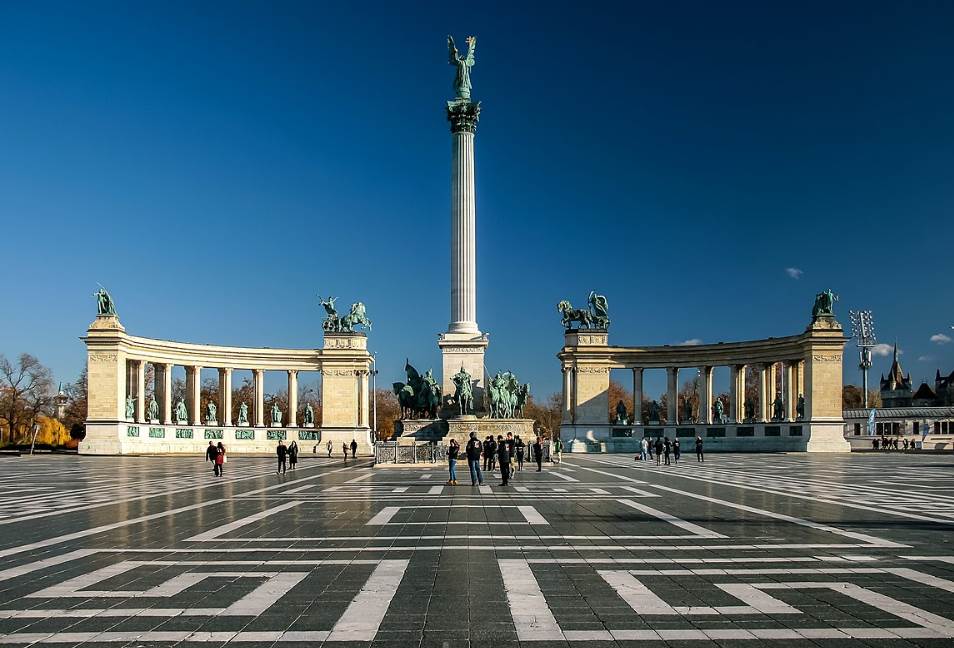
6. St. Stephen’s Basilica
St. Stephen’s Basilica is a large church in the heart of the city of Budapest. This Neoclassical building was completed in 1905 and dominates the area as it stands 96 meters (315 feet) tall. It was named in honor of Stephen I, the first King of Hungary (975–1038).
The location was once occupied by a theater called the Hetz-Theater in the 18th century. This was torn down to make way for this incredible landmark in Budapest. The structure features a Greek cross-ground plan and is home to the largest bell in Hungary which weighs 9 tonnes.
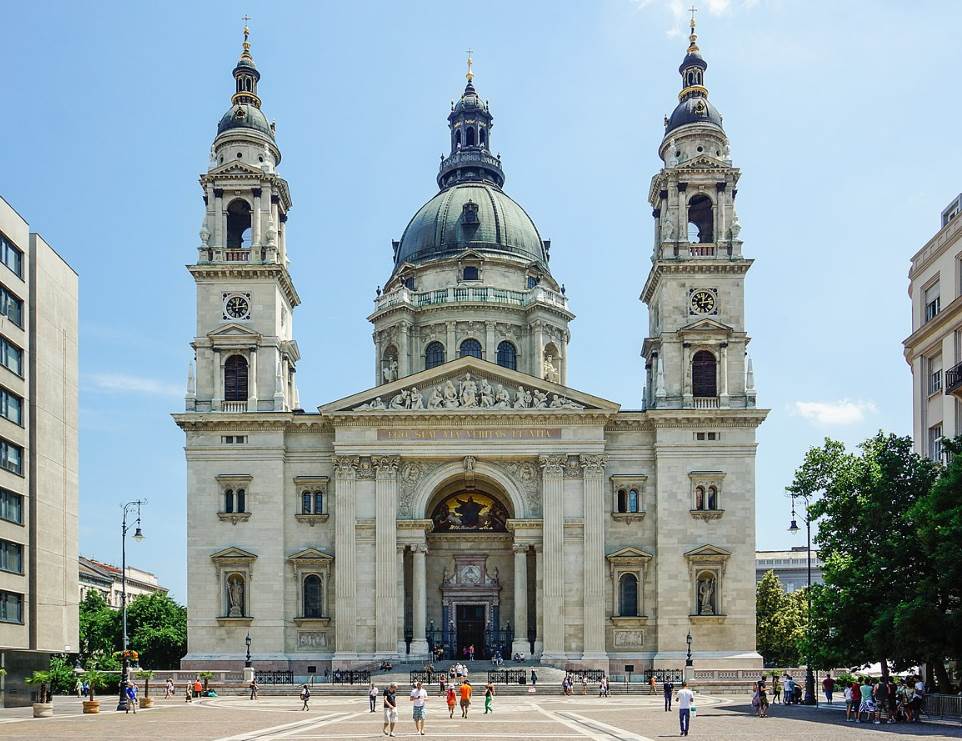
7. Fisherman’s Bastion
Fisherman’s Bastion is a Romanesque Revival building that is located next to Buda Castle and is one of the best places to get a panoramic view of the city. It was completed between 1844 and 1851 and has been one of the most popular tourist attractions in Budapest ever since.
If you count the towers you’ll notice that there are seven of them. This is a reference to the seven chieftains of the Magyars who founded Hungary in the year 895. Some sections of the old city wall of Budapest were incorporated into this fascinating structure in Budapest.

8. Széchenyi Chain Bridge
The Széchenyi Chain Bridge is a historic chain bridge and one of the most important bridges in the city. It was also the first bridge in Budapest to cross the Danube River. This means that it played a major role in the establishment of Budapest by joining Buda, Óbuda, and Pest together in 1873.
It connects the two major parts of the city, Buda, and Pest, and was completed in 1849. What’s remarkable is the fact that the bridge was designed by an English engineer named English engineer William Tierney Clark and constructed by a Scottish engineer named Adam Clark. The current bridge had to be rebuilt following World War II as it lay completely in ruins except for its two towers.

9. Vajdahunyad Castle
Vajdahunyad Castle is one of the most remarkable landmarks in the City Park of Budapest. The castle was constructed in 1896 and is a replica of Corvin Castle in Romania. It was constructed for the Millennial Exhibition in honor of the 1,000th anniversary of Hungary.
You’ll hardly find a building that incorporates more architectural styles than this stunning castle. It features elements of Romanesque, Gothic, Renaissance, and Baroque architecture. Equally remarkable is the fact that the castle during the exhibition was made of cardboard and wood. It was only replaced by the brick structure we see today between 1904 and 1908.

10. MOL Campus
MOL Campus is a skyscraper in Budapest that has only been completed recently in 2022. Budapest isn’t known for its famous skyscrapers, a notion emphasized by the fact that St. Stephen’s Basilica and the Hungarian Parliament Building were the tallest buildings in the city for a long time with a height of just 96 meters (315 feet).
The MOL Campus was constructed to serve as the headquarters of the MOL Group, a Hungarian gas, and oil company. This Neomodern building was designed by the British architectural firm Foster and Partners. It stands 150 meters (492 feet) tall and features 30 floors. This makes it the tallest building in Budapest and all of Hungary as well.



